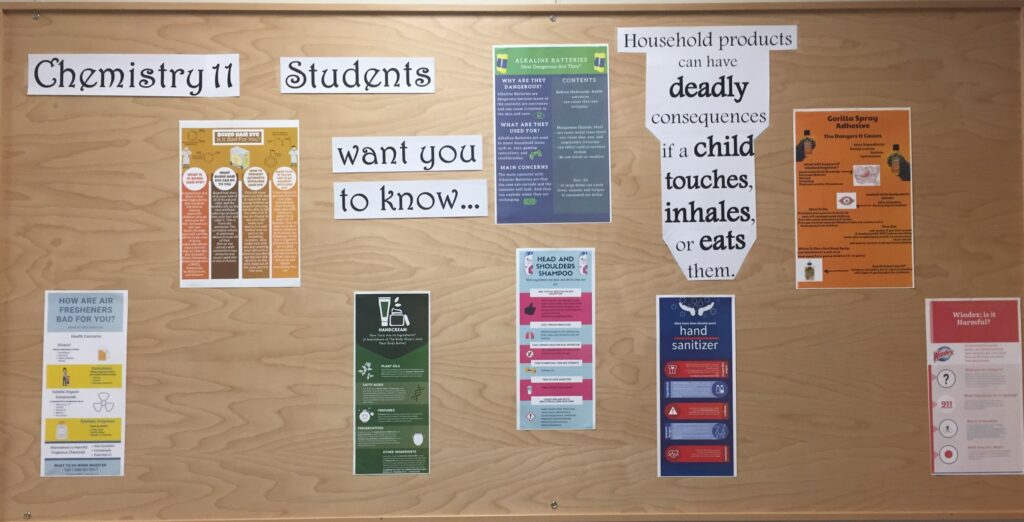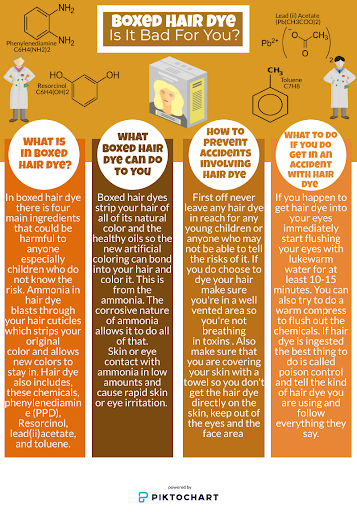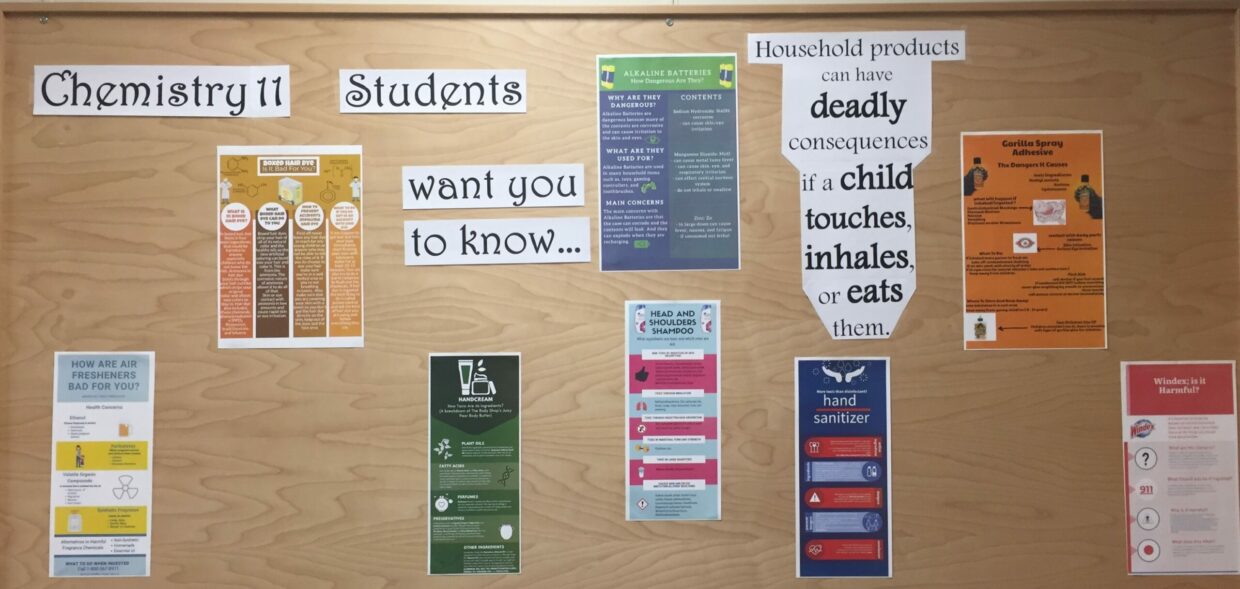Kim presented her students with a real world problem. She had received a letter from a local parenting group (copy embedded below) asking if her students could provide them with information about common household products labeled as dangerous, the chemicals in them, and why they are dangerous to children. Kim introduced the project verbally to the class and provided a written outline of the project (copy embedded below) to students. To make it a strong chemistry project, Kim also asked students to communicate some specific information about the compounds such as the atomic mass of the ingredients and the chemical structure.
Kim wanted to allow students the freedom to demonstrate their learning in different ways, so she left the end product up to them.
I wanted to somehow leave it open-ended so as not to kill their creativity, but wanted something they could check off to make sure they were going in the right direction.
Kim Lavigne
Although the end product was open-ended, she wanted to enhance student’s communication skills, providing them with some support for whatever method that they chose. That is where the infographics lesson came in. Communication, although not traditionally associated with chemistry, is one of the core competencies in the BC Science Curriculum, and experience in communicating scientific information to a variety of audiences fits right in to the curriculum goals.
A guest lecturer with knowledge of graphic design provided students with the basics in an interactive workshop done via video conferencing. Students were provided with a workbook (copy embedded below) and the guest lecturer used powerpoint slides (copy embedded below) to step them through the process of creating an infographic. The process included information that could be applied to any visual product (video, blog article, etc.)
As the guest lecturer joined the class using video conferencing, this activity could easily be adapted to remote synchronous learning (where all of the students joined the video conferencing room separately). Remote asynchronous learning could also easily be achieved if instructions and information from the powerpoint was added to the student handout or sequenced online. The project itself is suitable to remote learning as it involves connecting with household products and completing online research.
Students produced some great infographics shown in the images below!


